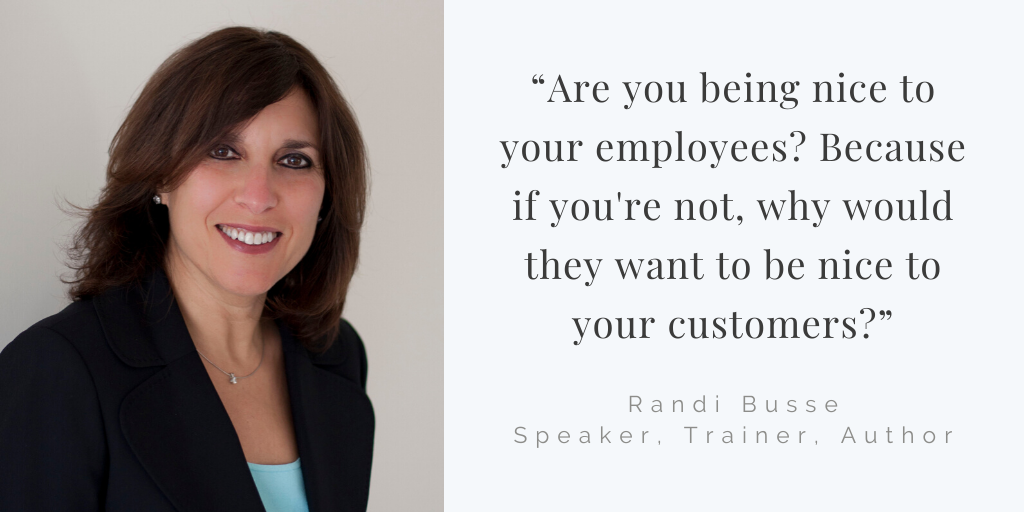Who is to blame for poor customer service?
You can probably make a list of things that make it difficult to keep your customers happy and coming back again and again:
Defective products anger customers and make service a chore.
Bosses often fail to adequately communicate, train, or coach.
Unfriendly policies get in the way.
Yet, unless you have a giant ego, you need to take some responsibility, too. You were hired to do a job that helps your company. It's not always easy to do great work, but you can often do more than you think.
Here's how you can overcome obstacles and take more ownership of your work.
Why should you listen to me?
It's easy to find people like me giving advice. What makes me any different, and why should you listen to me?
Great questions. I'll give you two reasons.
First, I've trained thousands of customer service employees. I've seen first-hand how grit and determination can help employees stand out and provide amazing customer service.
Second, I've personally experienced what I'm about to share.
At my last corporate job, I had seven bosses in four years. At the end of those four years, every person who worked in my department when I started was gone. They had quit, were laid off, got re-assigned, or were fired.
Except for me. I got promoted, gained more responsibility, and earned the trust of my bosses to work autonomously.
How did this happen?
My coworkers made the same mistake with each new boss. They tried to tell the boss how things were done, and expected the boss to conform to their habits and preferences. This caused the new boss to view them as actively disengaged employees.
I took a different approach.
With each new boss, I took the time to understand their priorities and then made sure I helped them succeed. Rather than telling my boss how things were done, I became an asset to help my boss achieve their agenda.
How can you take responsibility for your service?
It's self-empowering to take responsibility for the customer service you provide. Yes, we all face obstacles. But you can be the person who overcomes them and sets a positive example for everyone else.
Step 1: What's the vision?
Start by asking your boss for the customer service vision. This is a shared definition of outstanding customer service that gets everyone on the same page.
What if there isn't a vision?
You can share this resource page that contains an overview along with my step-by-step guide for creating one.
Another option is to create your personal vision by taking the Thank You Letter Challenge. This exercise will help you visualize the type of service you'd like to provide to your customers.
Step 2: Expand your influence
We all face obstacles that make it difficult to provide outstanding customer service. This activity can help you identify more solutions that are within your control.
One customer service team felt victimized by long hold times. Customers were already frustrated by issues with the company's latest software program, and the long wait only made that frustration worse. Unfortunately, customers took out their frustrations on the customer service team.
The team’s outlook changed when they completed the Expand Your Influence exercise. Within days, they were able to cut the average wait time by 50 percent. Software issues still existed, but the team took responsibility for making things better.
Here's a short video that explains how you can do the exercise.
Step 3: Become a customer advocate
Many issues go unresolved because employees just accept them. Nobody tries to solve the issue or shares the problem with someone who can.
You can change that by becoming a customer advocate.
This means proactively trying to solve issues that negatively impact your customers. When you aren't able to solve issues on your own, try to enlist your coworkers, your boss, and even people from other departments.
One activity that can help is a promise audit.
Conclusion
There's no question that customer service can be difficult. While there are many factors that make it more difficult than it needs to be, you aren't powerless.
It's up to you to take responsibility for making things better.
One thing you can do right now is subscribe to the free Customer Service Tip of the Week email. It's one tip, shared once per week via email.
Here's how it works:
You'll get a new tip each Monday.
Read the tip and think about how to apply it.
Practice the tip while serving customers.
One more resource is my book, Getting Service Right. It shares hidden and counterintuitive obstacles that make it hard to serve. The book also contains proven solutions for each challenge.








